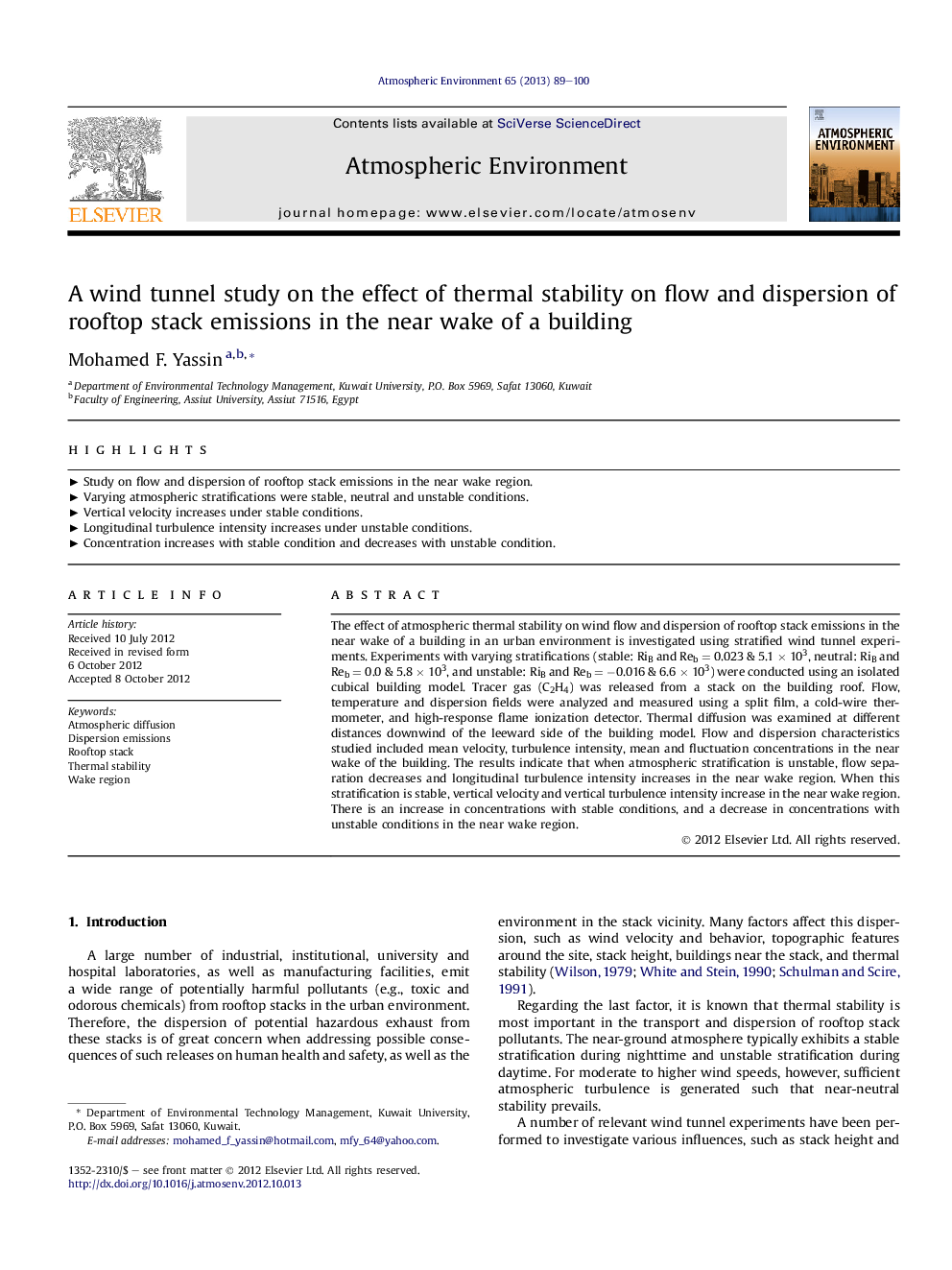| Article ID | Journal | Published Year | Pages | File Type |
|---|---|---|---|---|
| 4438528 | Atmospheric Environment | 2013 | 12 Pages |
The effect of atmospheric thermal stability on wind flow and dispersion of rooftop stack emissions in the near wake of a building in an urban environment is investigated using stratified wind tunnel experiments. Experiments with varying stratifications (stable: RiB and Reb = 0.023 & 5.1 × 103, neutral: RiB and Reb = 0.0 & 5.8 × 103, and unstable: RiB and Reb = −0.016 & 6.6 × 103) were conducted using an isolated cubical building model. Tracer gas (C2H4) was released from a stack on the building roof. Flow, temperature and dispersion fields were analyzed and measured using a split film, a cold-wire thermometer, and high-response flame ionization detector. Thermal diffusion was examined at different distances downwind of the leeward side of the building model. Flow and dispersion characteristics studied included mean velocity, turbulence intensity, mean and fluctuation concentrations in the near wake of the building. The results indicate that when atmospheric stratification is unstable, flow separation decreases and longitudinal turbulence intensity increases in the near wake region. When this stratification is stable, vertical velocity and vertical turbulence intensity increase in the near wake region. There is an increase in concentrations with stable conditions, and a decrease in concentrations with unstable conditions in the near wake region.
► Study on flow and dispersion of rooftop stack emissions in the near wake region. ► Varying atmospheric stratifications were stable, neutral and unstable conditions. ► Vertical velocity increases under stable conditions. ► Longitudinal turbulence intensity increases under unstable conditions. ► Concentration increases with stable condition and decreases with unstable condition.
